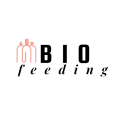Embracing the Shift: How to Initiate Gentle Feeding
As natural and nurturing as breastfeeding is, there comes a time when you will have to transition your baby from the breast to the bottle. This process, often referred to as gentle feeding, can initially pose challenges as your baby acclimates to this new feeding method. However, with patience, understanding, and the right approach, you can ensure a smooth and stress-free transition.
Understanding Gentle Feeding
Gentle feeding or soft feeding refers to the process of transitioning a baby from breastfeeding to bottle feeding in a gentle and gradual manner. This approach aims to ensure minimal distress and maximum comfort for both the mother and the baby. It promotes a positive and loving feeding experience while making the shift.
Why the Transition?
While breastfeeding fosters a unique mother-child bond, several factors may necessitate the transition to bottle feeding. These include:
- The mother returning to work or school.
- The need for other caregivers to feed the baby.
- Health-related issues that may make breastfeeding challenging.
- The mother’s personal choice to stop breastfeeding.
Easing into Gentle Feeding: Helpful Tips
Making the shift to gentle bottle feeding can be a seamless process with the right approach. Here are some tips to guide you:
- Slow and Steady: Begin with one bottle feed a day, gradually increasing as your baby gets comfortable. This helps your baby adjust at their own pace. For detailed advice on discontinuing breastfeeding, visit NCT or La Leche League International.
- Vary the Times: Don’t stick to the same feeding time each day. This flexibility helps your baby reduce their attachment to breastfeeding at specific times.
- Different Feeder: If possible, have someone else introduce the bottle. Babies associate their mothers with breastfeeding, and having another caregiver may reduce confusion and resistance.
Choosing the Right Bottle for Gentle Feeding
The type of bottle you choose plays a significant role in how well your baby adapts to bottle feeding. It’s vital, then, to opt for a bottle designed specifically to mimic the breast, providing your baby with a natural, familiar feeding experience. You can learn more about this in our blog post, Transform Your Feeding Routine With This Simple Bottle Swap.
More Than Just Feeding
Remember, feeding time is more than just nutrition for your baby. It’s a time for bonding and comforting. As you embark on this journey, aim to maintain these emotional components during bottle feeds, whether through skin-to-skin contact or by maintaining eye contact.
Transitioning to gentle feeding doesn’t need to feel daunting. With a little bit of patience, flexibility, and tons of love, it can be a stress-free experience for both you and your baby.
Seeking Guidance from Healthcare Professionals
Trusting in your intuition as a parent is essential, but never underestimate the value of professional advice. Seek guidance from your pediatrician or a lactation consultant to ensure a smooth transition to bottle feeding – particularly when dealing with a resistant baby. Bibesia, for example, is an excellent resource where you can get comprehensive guidance and support on baby nutrition and breastfeeding. Furthermore, you’ll find in-depth information by visiting these online healthcare resources – the BabyCenter, the NHS, and the CDC.
Maintaining Breast Milk Supply
When introducing your baby to the bottle, it’s important to consider the effect this may have on your milk supply. As a result, careful planning is paramount. Avoid rushing the weaning process as abrupt cessation can lead to engorgement or clogged ducts. Use a breast pump to express any remaining milk after feeding, helping maintain supply. Healthline has an excellent guide on how to store breast milk which may prove useful during this transition period.
Considering Your Baby’s Reactions
Every baby is unique, and responses to bottle feeding will mirror this. Some babies transition easily, while others may resist, cry, and fuss. Do not take these reactions personally or get frustrated. Understand that this is a significant change for your baby, and it might take time for them to adjust. Comfort, soothe, and continue to show love during this period.
How Gentle Feeding Benefits Mothers
While gentle feeding is designed to ensure minimal distress for the baby during the transition from breast to bottle, it also has several benefits for mothers. By transitioning gradually, mothers can avoid feelings of engorgement and decrease the risk of mastitis or blocked milk ducts. It also allows mothers the freedom to share feeding duties with other caregivers, enabling them to have some well-deserved time for self-care. For more tips on switching from breast to bottle, Enfamil offers helpful insights.
Note about allergies and baby formula: In the event breastfeeding isn’t an option for you, or your baby has specific nutritional needs or allergies, it’s essential to find the right formula for your child. Choose hypoallergenic or allergy-friendly formulas that are designed to closely mimic breast milk’s nutritional complexity.
Embracing the journey of breast to bottle feeding, gentle feeding certainly emphasizes a transition that minimizes stress for both baby and mother. It’s not an instantaneous process; it requires patience, love, and understanding. But with the right approach and focus, you and your baby will be able to embrace this new chapter together.

